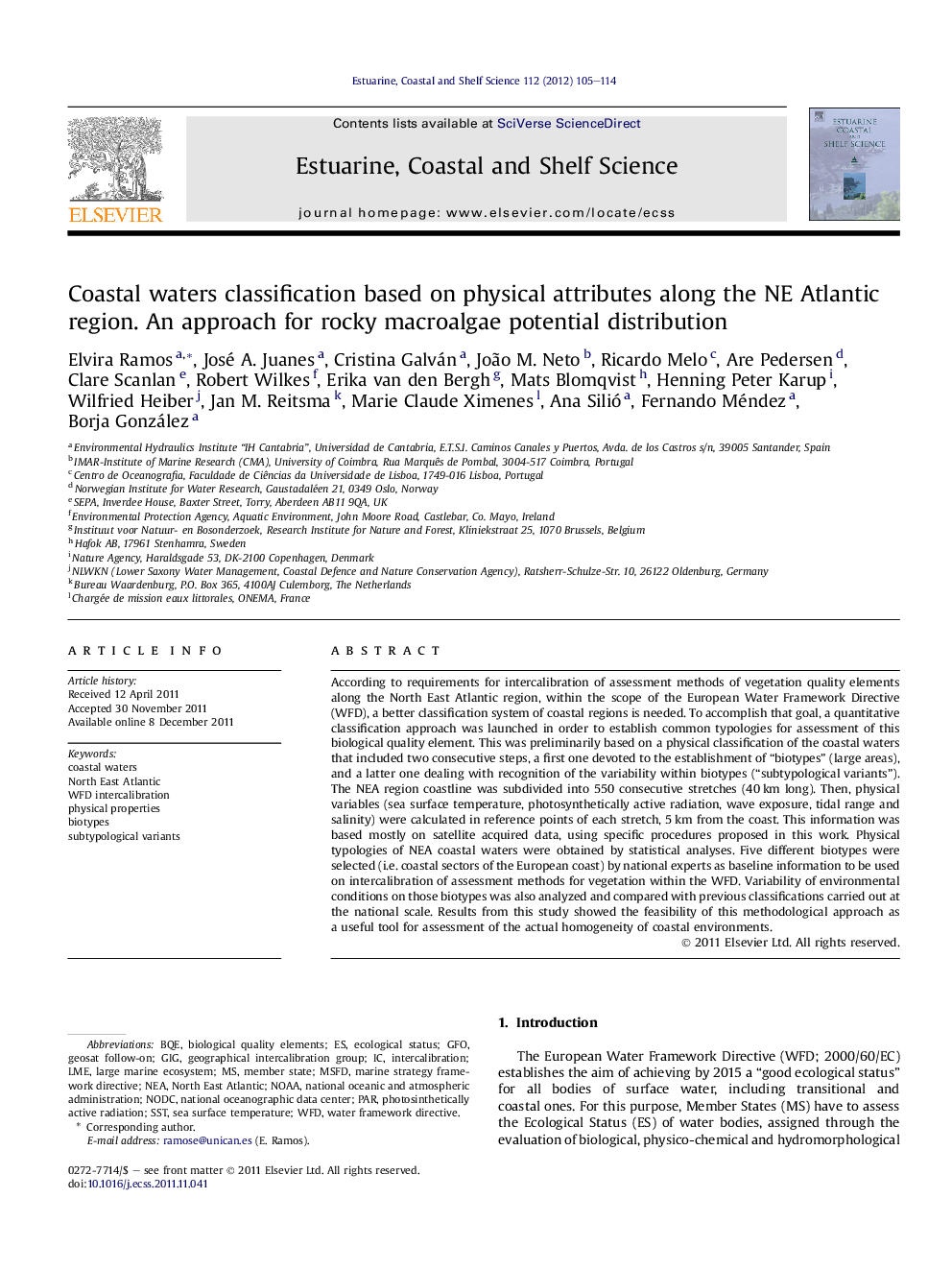| Article ID | Journal | Published Year | Pages | File Type |
|---|---|---|---|---|
| 4540057 | Estuarine, Coastal and Shelf Science | 2012 | 10 Pages |
According to requirements for intercalibration of assessment methods of vegetation quality elements along the North East Atlantic region, within the scope of the European Water Framework Directive (WFD), a better classification system of coastal regions is needed. To accomplish that goal, a quantitative classification approach was launched in order to establish common typologies for assessment of this biological quality element. This was preliminarily based on a physical classification of the coastal waters that included two consecutive steps, a first one devoted to the establishment of “biotypes” (large areas), and a latter one dealing with recognition of the variability within biotypes (“subtypological variants”). The NEA region coastline was subdivided into 550 consecutive stretches (40 km long). Then, physical variables (sea surface temperature, photosynthetically active radiation, wave exposure, tidal range and salinity) were calculated in reference points of each stretch, 5 km from the coast. This information was based mostly on satellite acquired data, using specific procedures proposed in this work. Physical typologies of NEA coastal waters were obtained by statistical analyses. Five different biotypes were selected (i.e. coastal sectors of the European coast) by national experts as baseline information to be used on intercalibration of assessment methods for vegetation within the WFD. Variability of environmental conditions on those biotypes was also analyzed and compared with previous classifications carried out at the national scale. Results from this study showed the feasibility of this methodological approach as a useful tool for assessment of the actual homogeneity of coastal environments.
Graphical abstractFigure optionsDownload full-size imageDownload high-quality image (133 K)Download as PowerPoint slideHighlights► We develop a quantitative classification along NEA coast for marine vegetation. ► The physical variables employed are: SST, PAR, wave height, tidal range and salinity. ► Five biotypes are obtained, which could be used as common intercalibration types. ► The physical variability is higher in biotypes located in the temperate region.
